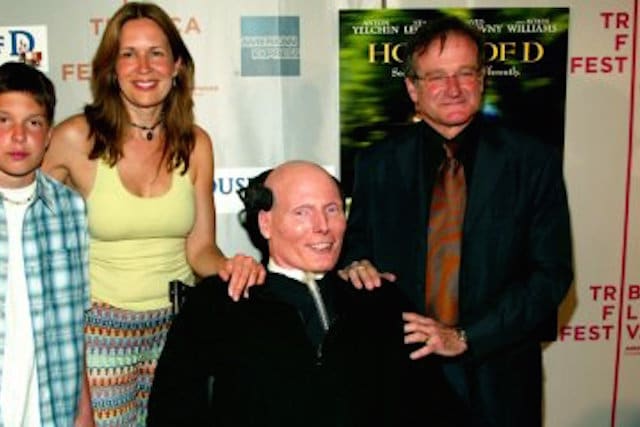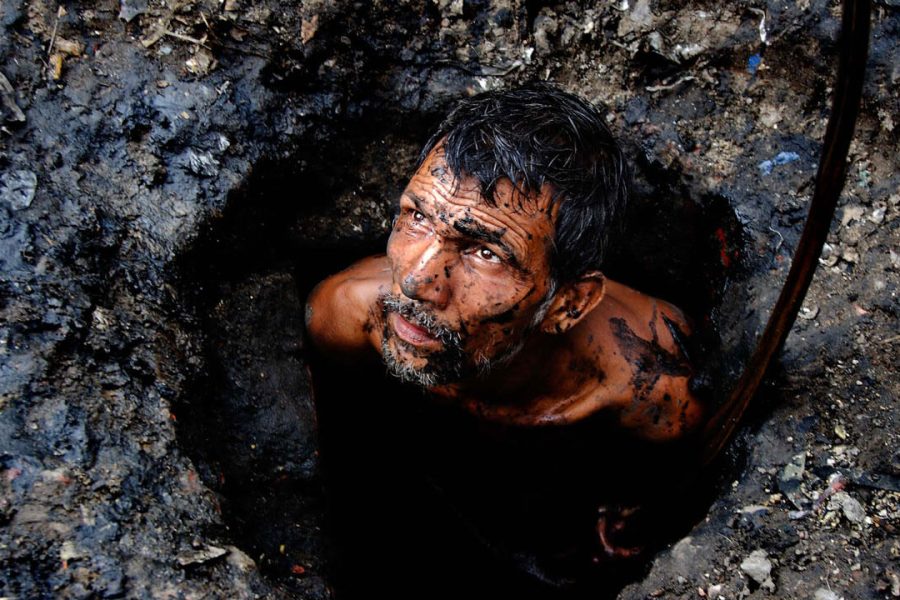Horror movies that have serious problems during production are called “cursed.” The streaming service Shudder has an entire series dedicated to the concept. There’s no need to focus solely on horror-related events. You can find supernatural phenomena in all genres.
In this article, we will look at both the behind the scenes of filming and the content of television programs. Whether it is the personal lives of actors or the names in the script, there are many events on both the small and big screen that will make you wonder if there is something very strange behind our understanding of reality. Many of them will make you wonder if this thing is really sinister.
10. Roundhay Garden

Our first stop is at the very birth of cinema, if not earlier. The first piece of motion picture ever shot with a single camera (so early in the process that it was printed on paper instead of celluloid film). Roundhay Garden was a two-second sequence by inventor Louis Le Prince, filmed in the front yard of his in-laws in 1888 in Leeds, England. On screen are Louis' mother-in-law Sarah Whiteley and son Adolphe Le Prince, Adolphe walking parallel to the camera while Sarah and her husband dance. Watching it today, you'd never suspect that the first film seemed to cast a sort of curse on its cameraman and stars.
Ten days later, Sarah Whiteley died. Indeed, she had collapsed from the heat while filming the movie and spent the last ten days trying to recover from it. Within two years, Louis Le Prince disappeared from a train on September 16, 1890, while traveling to organize a showing in New York City that was to be the first public exhibition of his invention. As if this tragedy were not enough for a home movie, eleven years later, Adolph died very suspiciously while hunting. Even at the time, there were rumors that no less than Thomas Edison had done in Louis Le Prince to get rid of a competitor for his own cinematic inventions, and then his rival's son, to put an end to the investigations, but conclusive evidence has never been brought to public attention.
9. High Target

John F. Kennedy must save newly elected President Abraham Lincoln from assassination. Sound like a silly time-travel comedy? It's not, that's the plot of Anthony Mann's historical crime thriller"High Target" starring Dick Powell as police sergeant John F. Kennedy. If that seems like a ridiculous pander, consider that the film was released in 1951, when Kennedy was a representative in the U.S. House of Representatives and before the publication of Profiles of Courage" , who did so much to enhance his national fame.
The events of the film are loosely based on real events. In particular, the process of moving Lincoln to Washington, D.C., for his 1861 inauguration under heightened alert because the Pinkerton Agency had learned that an assassination attempt was being planned on the highly controversial president's life. It became known as the Baltimore Plot , for the period of the February 22, 1861, journey conducted along the Baltimore Railroad line. Police Sergeant John Kennedy was not involved, although he was an HF Kenny , who accompanied the Pinkertons on their escort mission. Part of Kenny's contribution was to give the carriage driver deliberately incorrect directions in case the driver intended to lure them into an ambush, which could have been the setup for a silly comedy instead of the tense thriller Mann had in mind.
8. All my children

With more than 10,700 episodes of the melodrama from 1970 to 2011, there was plenty of room for painful moments both on and off camera. Undoubtedly, the most painful began in August 1997. During an episode that month, actress Eva LaRue’s character, Maria Santos, was on a plane. It crashed, and she didn’t survive. In a moment that probably wouldn’t be included today, her significant other Edmund was confident that at least she would live on through her children, who were “the greatest gift she could give.”
Fast forward to September 10, 2001. Eva LaRue was booked on American Airlines Flight 11. Because she was eight months pregnant with her daughter, Kaia (she was in New York for a baby shower), she wanted to sleep in and rescheduled her flight at the last minute. As a result, she rescheduled her exit from one of the planes that crashed into the World Trade Center, as she later tweeted and confirmed in interviews. If that sounds familiar, it’s because a similar near miss happened to Seth MacFarlane. For her part, LaRue claimed that brushing death was the kind of experience that “takes away your fear.”
7. Poltergeist

While the introduction stated that the list would not focus solely on horror films, they could not be excluded, and the events surrounding this 1982 classic are heartbreaking. Shortly after the release of the first film in 1982, Dominique Dunne, who played the teenage Dana, was strangled to death by her boyfriend John Thomas Sweeney in the driveway of her West Hollywood home. The specific murder occurred on October 30, and was again the subject of public controversy in 1986 when he was convicted of involuntary manslaughter, which did not even stop him from returning to his old job as a chef at The Chronicle restaurant. As many pointed out at the time, strangulation nearly caused the deaths of Robbie, Dana's younger brother in the film, and Oliver Robbins, an actor who was reportedly only saved from asphyxiation by the intervention of Steven Spielberg.
Perhaps even more disturbing was the fate of Heather O'Rourke, who played Carol when she was just seven years old. She starred in all three original Poltergeist films and became perhaps the most iconic character (if not her, then certainly her "they're here" line). And in 1988, when she was just twelve years old, she died during emergency surgery for an illness caused by tainted well water. She and her co-star were buried in the same cemetery, adding to the sense of dark curse that surrounded the Poltergeist films. poltergeist .
6. West Wing

In the final season of the Aaron Sorkin-created drama, Leo McGarry, a war criminal and adviser to President Josiah Bartlett, had two heart attacks. One at Camp David, where he was abandoned in the woods for several hours, and another on election night when he was running mate Matthew Santos, the second of which proved fatal. Actor John Spencer was not shown in the scene where his character's body is discovered because he died before the episode was filmed.
John Spencer was just under 59 years old at the time of his death, making him relatively young compared to the average life expectancy in 2005. The campaign headquarters were told that they were going to kill him off in an episode that aired a few days before his death. According to Martin Sheen, after Spencer passed away, the entire season was rewritten to change the outcome of the season-long election arc.
5. Troy

This 2004 film was directed by The Boot Wolfgang Petersen is not very well known today. Commercially it was a success only thanks to the worldwide box office, critically it was a modest success at best. I was widely criticized for the grossly inaccurate adaptation of Homer's "Iliad" people who would never read an ancient epic in their lives. However, there was a curious form of verisimilitude, or perhaps if you were a form of acting, that occurred during filming.
During one of the stunts, star Brad Pitt injured his Achilles tendon, which he called "a fit of stupid irony," since a major event in the original Iliad is that the character of Achilles is knocked down by a weakness in the same body part. This was no small event for the production, as it was shut down for weeks while he recovered. The delay caused Petersen even more headaches when the crew stayed on site to prevent a hurricane from hitting and destroying much of their equipment and sets. It's a wonder Troy is no longer remembered as the film's cursed set.
4. Above suspicion

Christopher Reeve was, of course, best known for playing the all-American hero Superman in four films over the course of a decade. Behind the scenes, he bolstered his good-guy image through activism such as organizing Amnesty International and leading a protest march against Chilean dictator Augusto Pinochet. However, throughout his career, he played roles that subverted that image, such as in the black comedyDeath trap » 1982, "A Blow in the Night" 1991, where he played a child predator, and ""Above Suspicion" 1995, where he played a man who marries his wife and brother and tries to fake paralysis as an alibi. In what may have been stunt casting, Reeve's real-life wife, Dana Reeve, played a detective investigating his character.
Those with any knowledge of Reeve's later life know of his horseback riding accident in 1995, which left him paralyzed from the neck down. What elevates this from the realm of what Brad Pitt called stupid irony to wickedly cruel irony is that the injury occurred just days after the premiere of"Beyond suspicion" . However, Dana Reeve said in an interview that she did not like the sentimental depictions of Reeve's misfortune when he was doing charity work for the disabled, so at the time they did not seem to want anyone's pity.
3. MacMillan and wife

This police procedural about a married couple, Commissioner Stuart MacMillan and his wife Sally, solving crimes is little discussed today, but given that it ran from 1971 to 1977, it had a decent run. It's not hard to see why. The fact that its episodes were 60-90 minutes long meant that they were a little harder to syndicate than contemporaneous police procedurals likeColombo" It also doesn't help that the film killed off Susan St. James's character Sally and her son over a contract dispute, which didn't reflect well on the artistic integrity of the production. It's a decision that has struck a terribly dark note decades later.
By 2004, Susan Saint James had married NBC executive Dick Ebersol and had a 14-year-old son named Teddy with him. That same year, on Thanksgiving weekend, Saint James's husband and son were in a plane crash. Dick Ebersol survived, but their son did not. Saint James said of the ordeal that her way of coping was to remind herself and her family that they had to move past it and "resentment is like taking poison and hoping the other guy dies."
2. Sign

Like the hype around"The Exorcist" during production, there were a lot of stories about how many things went wrong during production " Omena" , which made it seem as if the forces of Satan were working to sabotage the filming. As Screenrant pointed out regarding "The Exorcist" , many of these supposedly supernatural occurrences were more likely the result of irresponsible filmmaking and sleazy marketing and promotion, and of course a process that lasts over nine months is going to have some problems. The same goes for The Omen, although there is one anecdote that doesn't require the Devil or anything supernatural to be chilling.
A year after the release of The Omen, special effects artist John Richardson was passing through Belgium with his assistant Elizabeth Moore as they worked on "A Bridge Too Far" , a World War II film about Operation Market Gardens, the failed Allied attempt to capture a number of Dutch bridges in late 1944. There was a severe car accident that left Elizabeth Moore decapitated. Richardson himself reported that the accident was uncannily similar to the decapitation he had been involved in while filming The Omen, and the accident reportedly took place near the town of Ommen.
1. China syndrome

This 1979 film, starring Jane Fonda, Michael Douglas and Jack Lemmon, centered on an attempt to smuggle footage from a nuclear power plant showing that a meltdown had been averted, was one of the biggest hits of that year. It was denounced as alarmist by many in the nuclear power industry and given a vindication that no doubt brought cold comfort to its makers when the Three Mile Island nuclear accident occurred, a disaster that cost more than a billion dollars to clean up and which (heavily disputed) studies claim caused a 64% increase in some local cancer rates within 12 days of its premiere.
Unlike "Omena" And "The Exorcist" , the studio reportedly was not trying to profit from the real-life tragedy, and studio executives and stars like Michael Douglas were required to tell any news outlet that asked "no comment." Despite this, Michael Gray, who wrote the original script for The China Syndrome, agreed to write an article about the Three Mile Island disaster for Rolling Stone magazine. China Syndrome and Three Mile Island were comparable.
Dustin Kosky also wrote Return to Life with Jonathan "Boglich" Wojcik, a horror comedy about the first appearance of a living being centuries after the entire Earth has died and turned into ghosts.













Оставить Комментарий